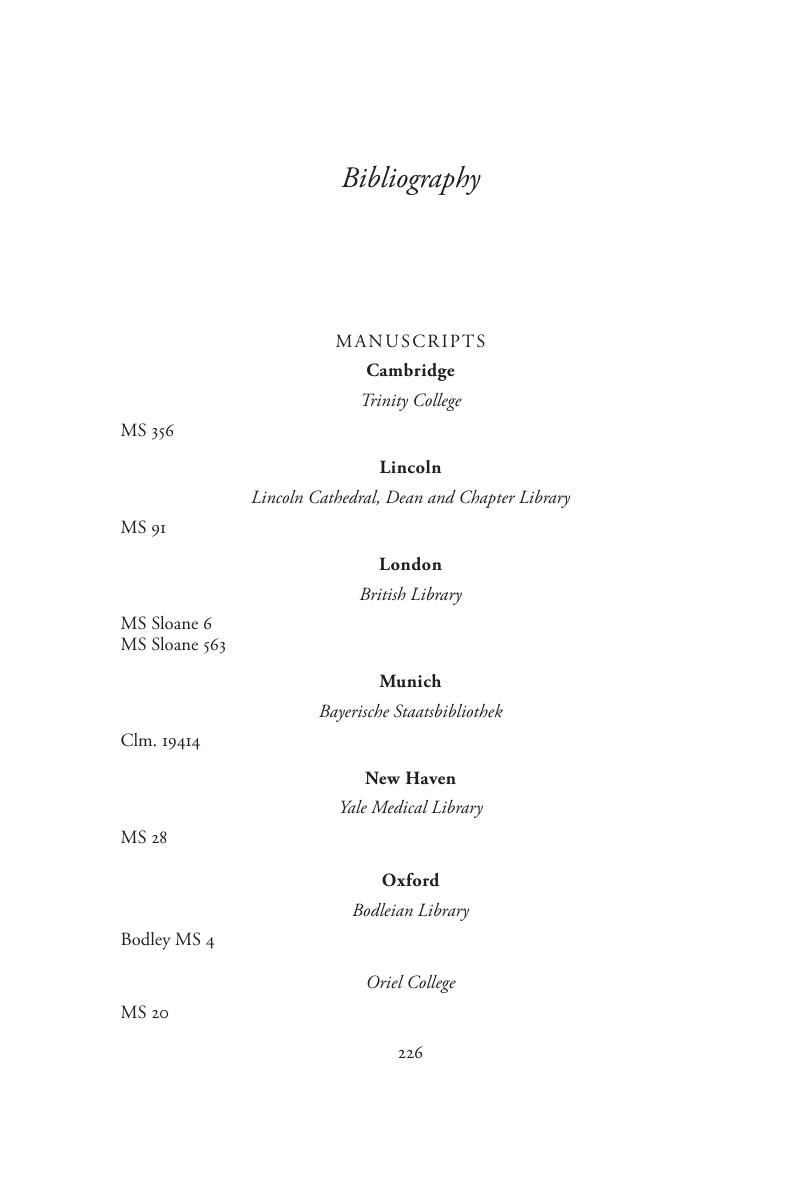Book contents
- Middle English Mouths
- Cambridge Studies in Medieval Literature
- Middle English Mouths
- Copyright page
- Dedication
- Contents
- Acknowledgements
- Abbreviations
- Introduction: Everyday Mouths
- Chapter 1 Natural Knowledge
- Chapter 2 The Reading Lesson
- Chapter 3 Tasting, Eating and Knowing
- Chapter 4 The Epistemology of Kissing
- Chapter 5 Surgical Habits
- Notes
- Bibliography
- Index
- Series page
- References
Bibliography
Published online by Cambridge University Press: 26 June 2018
- Middle English Mouths
- Cambridge Studies in Medieval Literature
- Middle English Mouths
- Copyright page
- Dedication
- Contents
- Acknowledgements
- Abbreviations
- Introduction: Everyday Mouths
- Chapter 1 Natural Knowledge
- Chapter 2 The Reading Lesson
- Chapter 3 Tasting, Eating and Knowing
- Chapter 4 The Epistemology of Kissing
- Chapter 5 Surgical Habits
- Notes
- Bibliography
- Index
- Series page
- References
Summary

- Type
- Chapter
- Information
- Middle English MouthsLate Medieval Medical, Religious and Literary Traditions, pp. 226 - 245Publisher: Cambridge University PressPrint publication year: 2018



